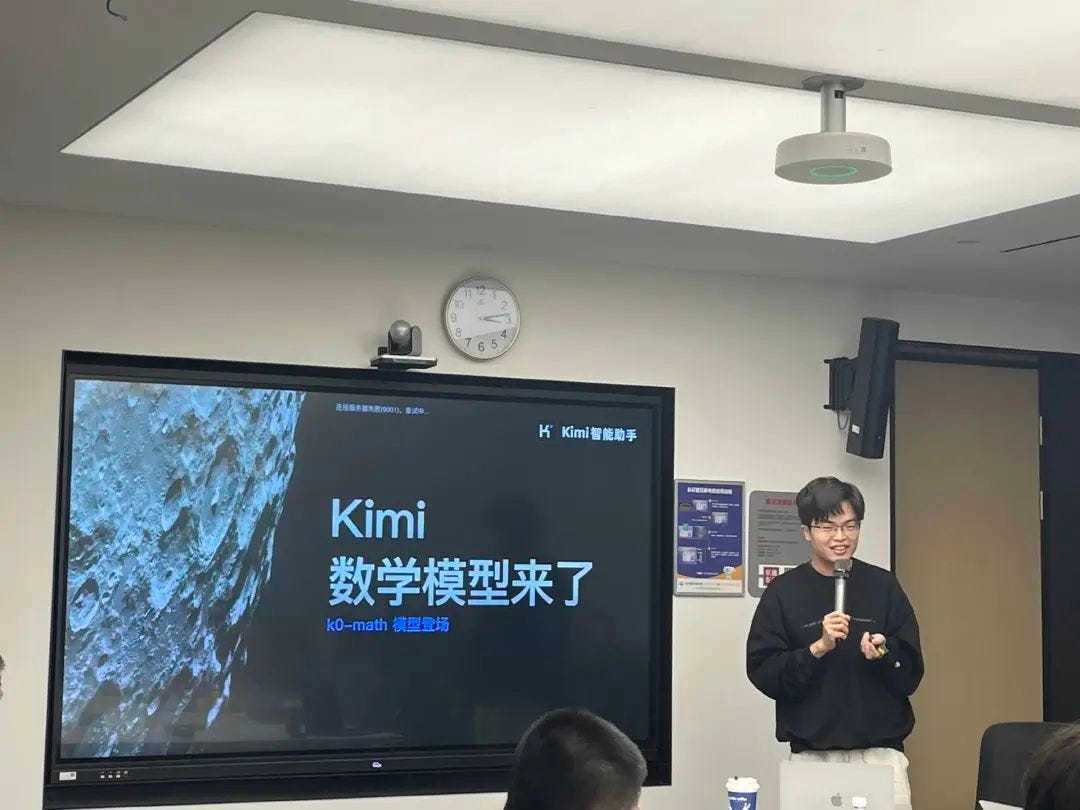Inside China’s AI Race: Community Experiments, Platform Integrations, and IPO Moves
Kimi bets on community to fight DeepSeek, Tencent embeds AI into WeChat, and Zhipu seeks to be China’s first LLM IPO.
Last week, three developments offer a snapshot of the Chinese AI scene: aggressive user growth tactics, platform-level integrations, and growing state-backed ambitions. Here’s what we’re watching.
1. DeepSeek's Chinese Rival Kimi Integrates Community Features into Its AI Application
As OpenAI reportedly explores a social network similar to X, China’s Moonshot—one of the “AI Six Dragons”—is quietly testing a built-in content community within its chatbot, Kimi. This community product, launched at the end of last year, has been in limited testing until now. Based on screenshots shared by test users, the community adopts a feed where users can share their AI interactions with the community. For now, the feed is mostly filled with AI-generated news snippets, suggesting limited user-generated content and shallow community interaction. This move is viewed as Kimi's strategy to increase user engagement time and attract new users following DeepSeek's explosive popularity.
Quick recap
Moonshot AI's chatbot Kimi was launched in October 2023. In the first half of last year, Kimi supported lossless context input of up to 2 million characters. With this feature and large-scale promotional activities, Kimi became one of the AI services with the largest user base in China.
Moonshot AI was once the highest-valued large language model company in China. Their most recent funding round was in May last year, with a valuation of $3 billion. Current shareholders of Moonshot AI include multiple top Chinese investment institutions as well as tech giants like Tencent and Alibaba.
In November last year, GSR Ventures (an investor in Moonshot AI founder Yang Zhilin's previous company) and other institutions initiated arbitration against Yang Zhilin in Hong Kong, questioning the relationship between Moonshot AI and Yang's previous company. They also pointed out that GSR Ventures investor Zhang Yutong had concealed her shareholding in Moonshot AI. Zhang Yutong was believed to have played an important role in attracting Alibaba's investment in Moonshot AI.
Context check
Before DeepSeek released its v3 and r1 models, Kimi was once the most prominent AI startup in China, recruiting talent extensively from ByteDance and PDD while aggressively promoting on social media.
While DeepSeek organically achieved tens of millions of daily active users, Moonshot's substantial advertising expenditure failed to push Kimi's daily active users to the ten-million threshold. Consequently, in February this year, Kimi significantly reduced its advertising budget.
Since the end of the Chinese New Year holiday, Moonshot has experienced internal turbulence, with three product managers currently in the process of leaving the company.
Reactions
A former investor at Sequoia China believes that the product managers with community-building experience have likely already left Kimi, suggesting that without expertise in this area, the team is taking a "brute force" approach.
The Paper (Pengpai News) suggests that from a user experience perspective, Kimi's community feature more closely resembles the "Discover" page that AI search engine Perplexity added last year. Chatbot-style AI assistants like Kimi primarily focus on answering questions or providing assistance, with limited user participation in content creation.
Just a thought
Content communities have historically struggled to thrive in China's internet ecosystem, with countless vertical community startups failing to achieve sustainable success. Using a community to increase retention for a chatbot may be wishful thinking on Moonshot's part, especially when competing for attention with platforms like Douyin and Xiaohongshu.
2. Tencent Integrates Its AI Bot into WeChat
On April 16th, Tencent's "Yuanbao" AI assistant was launched on WeChat—China's largest IM tool and social platform. Users can now add Yuanbao as a friend and interact directly within WeChat's chat interface. This integration means Tencent's AI application Yuanbao now has an official entry point within WeChat. Some complex responses are presented as links, which also provide official download options for the Tencent Yuanbao app.
Why it matters
WeChat boasts nearly 1.4 billion monthly active users, the massive user base frequently creates new business opportunities within its ecosystem. For example, leveraging red packet transfers during Chinese New Year, WeChat Pay quickly caught up with Alipay in mobile payments. Similarly, PDD (the parent company of Temu) initially grew through users sharing purchase links on WeChat.
Following DeepSeek's surge in popularity, Tencent's Yuanbao was the first to integrate DeepSeek's technology while intensifying its advertising efforts, with marketing expenditures exceeding those of Moonshot's Kimi and ByteDance's Doubao.
3. Zhipu AI—One of China's "AI Six Dragons"—Officially Initiates A-Share IPO
On April 15th, information on the China Securities Regulatory Commission's website revealed that Zhipu AI—one of China's "AI Six Dragons"—has officially initiated the process for domestic listing in China, making it the first Chinese large language model startup to pursue an IPO.
Quick recap
Founded in 2019, Zhipu AI's core team primarily consists of members from Tsinghua University.
Unlike other large language model companies, Zhipu AI's investors are predominantly RMB funds, state-owned capital, and government industrial funds. This funding structure means Zhipu doesn't need to compete with other AI companies for increasingly scarce USD investments in China.
Since its establishment in 2019, Zhipu has secured over 15 billion RMB in cumulative financing, with its latest valuation reaching 30 billion RMB as of February this year.
Context check
Unlike Kimi's consumer-oriented approach, Zhipu AI primarily generates revenue from B2B clients across financial services, government agencies, and higher education institutions.
Former clients of Zhipu AI have indicated that there remains a gap between the company's promised capabilities and actual implementation results.
Thanks for reading the very first edition of our Voice of Context. Have thoughts, questions, or topics you’d like us to cover? Reply and let us know — we’re building this together.
(And if you found this useful, forward it to a friend or teammate.)






